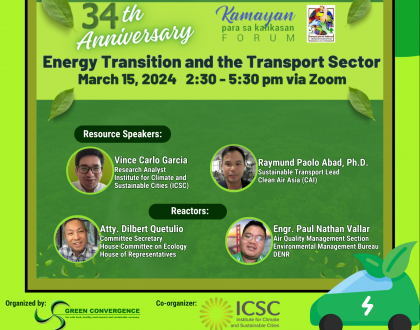Arroceros Park, A Window to Our Past, A Lifeline to Our Future
Michelle (not her real name), a third year education student of Universidad de Manila, sees the nearby Arroceros Park as welcome relief amidst the urban jungle that is Manila.
“Our school is right next to busy thoroughfares, so there is considerable noise and air pollution around the area. The trees of the Arroceros Park somehow lessen the harmful effects of this pollution,” she said.
The Arroceros Park is an urban forest in a 2.2 hectare lot tucked between Villegas St. and the Pasig River in Ermita, Manila. Dubbed as the last lungs of Manila, the forest acts also as a carbon sink, a reservoir that retains carbon and prevents it from passing into our atmosphere. In a city almost devoid of greenery and open spaces, it is safe to assume that Manila needs Arroceros Park more than the latter needs it.
Aside from its ecological importance, the park has immense archeological importance. The area was part of the trading quarters of the Chinese before they were eventually relocated in present day Binondo during the Spanish colonial period. As such, archeological artifacts can potentially be found buried underneath the forest. In fact, recent diggings in the neighboring Metropolitan Theater have uncovered Chinese ceramics dating back several hundred years ago.
Through the years, the forest was populated by several varieties of trees and these were nurtured by a private organization called Winner Foundation. The lease details between the group and the city government of Manila is now at the center of a battle that threatens to tear down the Arroceros Park and replace it with a gymnasium.
The details of this battle were the recent topic of the Kamayan para sa Kalikasan Forum, a monthly talk that tackles pressing issues. Now on its 330th edition, the Kamayan Forum has been running for 27 years.
Kamayan is spearheaded by the Green Convergence, a coalition of networks, organizations and individuals working for a development paradigm that addresses the need for social and economic progress while preserving water, air and land for future generations.
Invited panelists included Ms. Angelica Ambal of the Manila Doctors Hospital and Mr. Paulo Burro from the office of the noted environmentalist and Ramon Magsaysay laureate, Atty. Antonio Oposa.
Ms. Ambal shared that the Manila Doctors Hospital and its affiliates are adopting zones in the capital to revitalize them. For them, such initiatives align with their healthcare mission, as green spaces improve psychosocial wellbeing. For one of their partner organizations, the Silungan ng Pag-asa, a shelter for abused children, forest parks provide an opportunity for these children to enjoy the childhood they deserve.
Under the aegis of Atty. Oposa’s office, legal strategies are being worked out to save the Arroceros Park from demolition. But more importantly, they are stressing the importance of talking with the park’s stakeholders, including the city council of the government of Manila, to thresh out differences. According to Mr. Burro, this will complement plans to have the park declared as a protected area.
These multi-sectoral efforts are just a few of the many initiatives to save the Arroceros Park. Various efforts are gaining ground as more and more people realize that the park’s future is also their future. For Michelle, subsequent actions from the city government will reflect how it values its constituent’s welfare.
Recommended Posts

Impacts of Development Projects on Indigenous Peoples
April 19, 2024

Energy Transition and the Transport Sector
March 15, 2024

